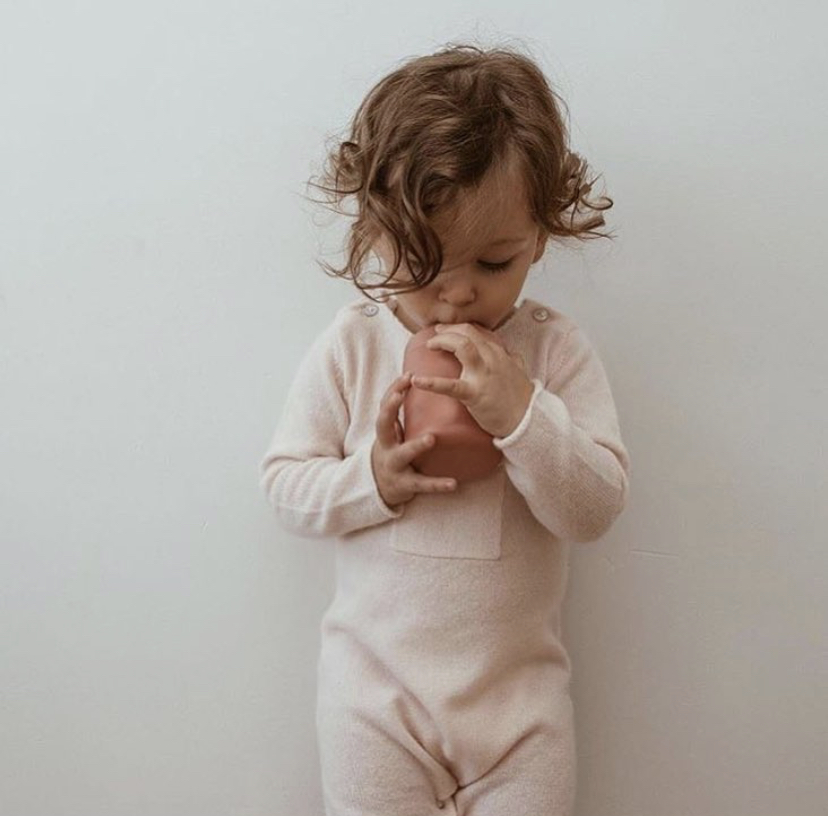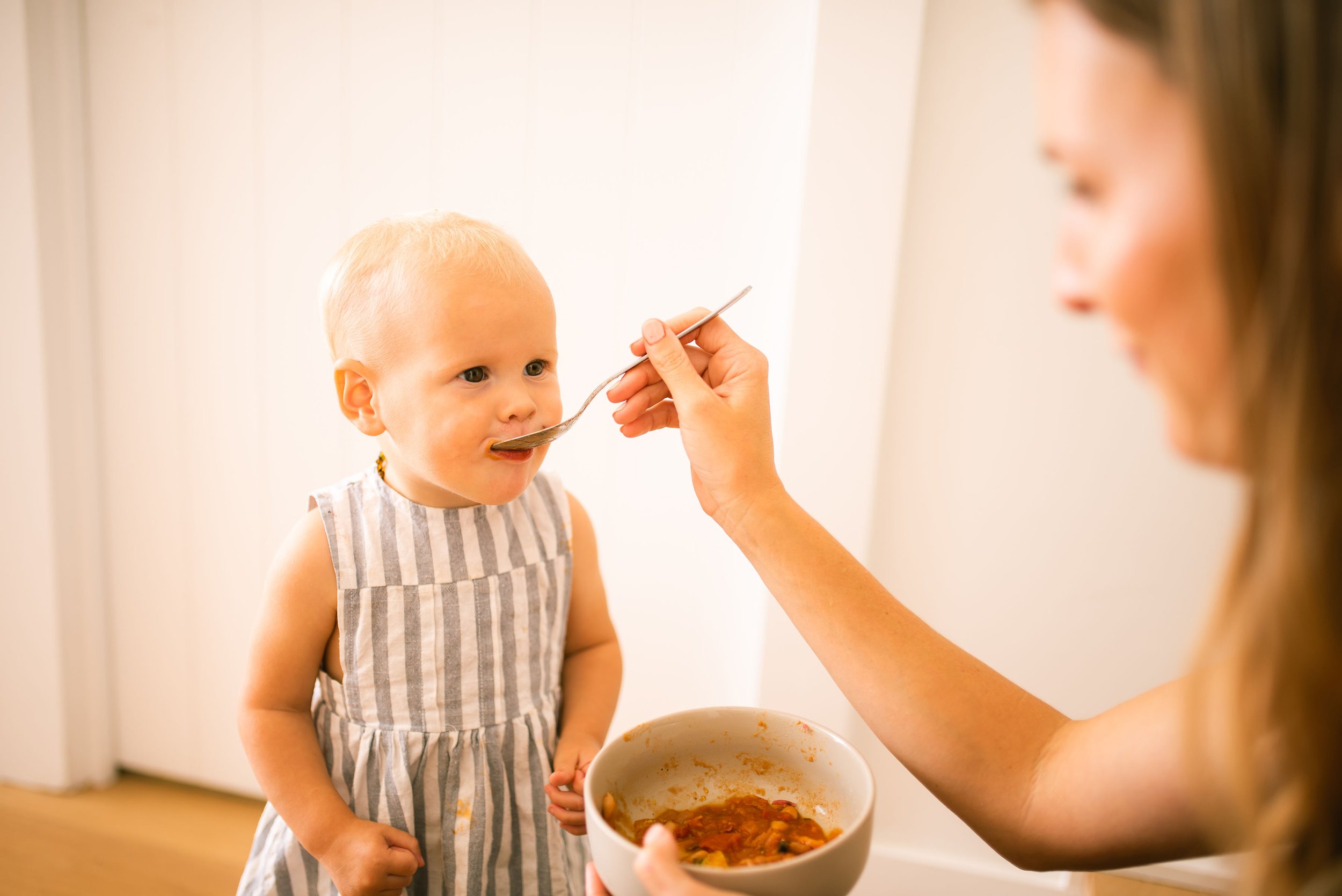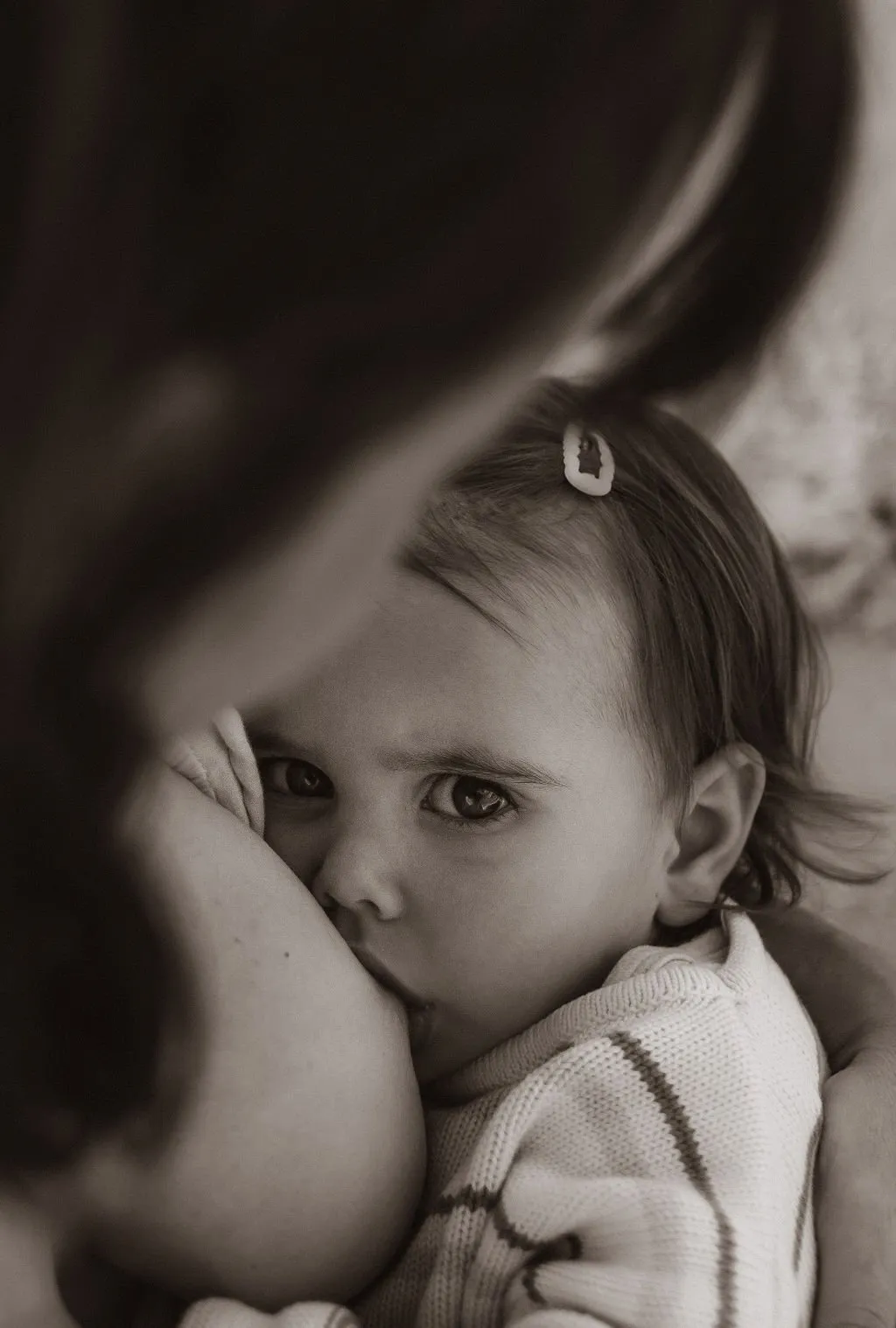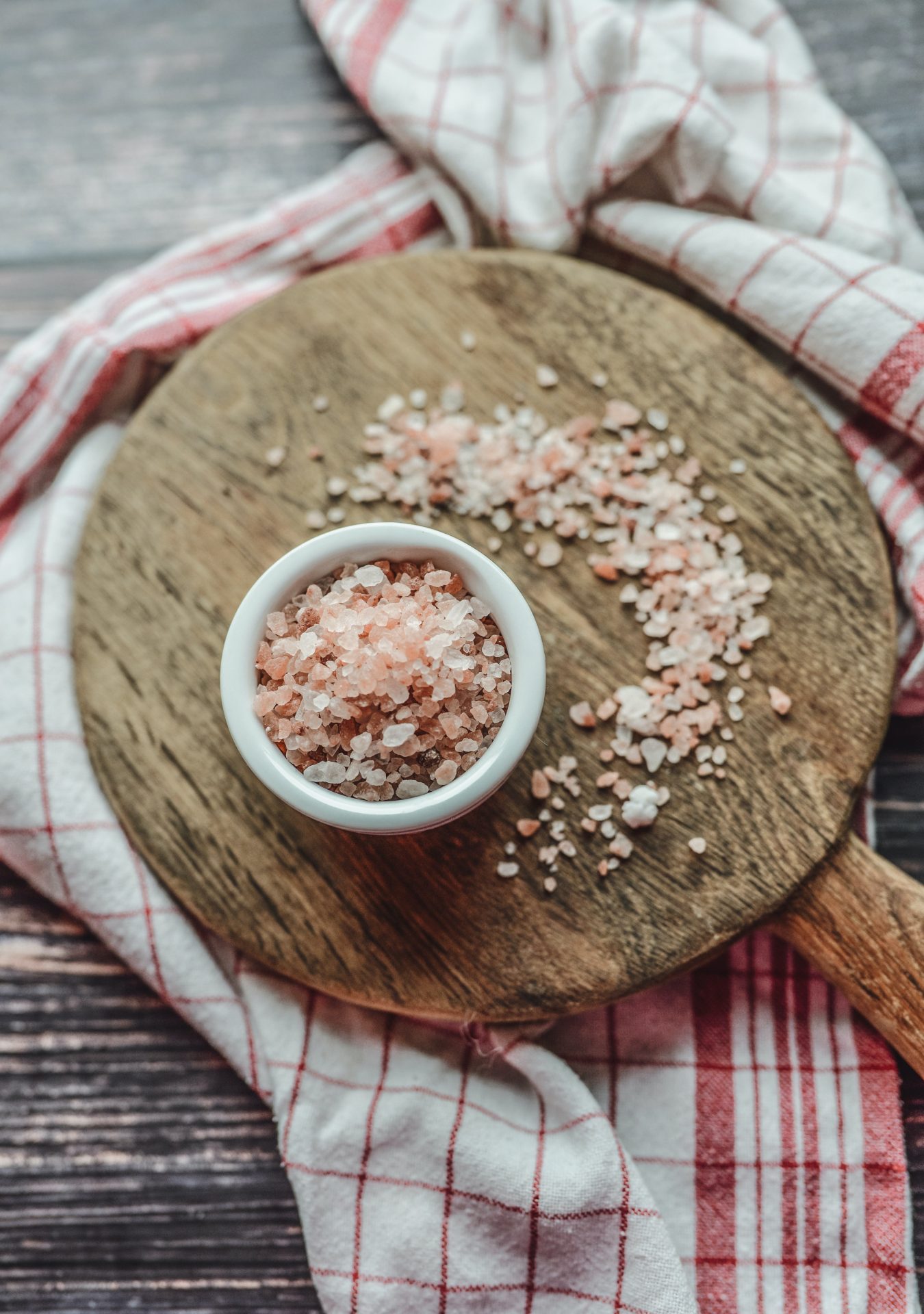When should I start introducing water to my baby?
If your baby is under 6 months old, then the only fluids they need to drink are breastmilk or formula. It is recommended that you don’t introduce drinks of water before 6 months of age as this can displace milk feeds and dilute electrolytes within the body. If it is a very hot day, your child has been vomiting or has diarrhoea or anything else that could lead to dehydration, you should offer additional fluids in the form of milk feeds (breastmilk or formula).
If your child is over 6 months of age, you can start to offer them small sips of water, but still their primary hydration should come from milk feeds. Remember that breastmilk is composed of over 80% water, and the same goes for formula. Introducing water from 6 months old is more about obtaining the skills for drinking water as well as building healthy habits. Like babies under 6 months old, if your little one has been unwell, it is a very hot day or anything else that could lead to dehydration then continue to offer additional milk feeds, as well as sips of water.
In Australia, the National Health and Medical Research Council recommends:1
“Exclusively breastfed infants do not require additional fluids up to 6 months of age.”
So how much water does my child need?
The Australian guidelines recommend the following:2
Infants 0-6 months – 700mL per day from breastmilk or formula
Infants 7-12 months – 800mL per day from breast milk, formula, food, plain water and other beverages, including 600 mL as fluids (majority of those 600mL should be breast milk or formula)
Children 1-3 years – 1L per day from fluids (water, milk feeds, other drinks)
To break this down a little further, your child’s fluid intake should look something like…
Before 6 months – breastmilk or formula
From 7-9 months – approximately 600mL of fluids from milk feeds, 100-150mL of water offered as sips throughout the day, and 50-100mL of fluids coming from food (you don’t need to measure this, just know that our solid foods do contain fluid, and in these early months of starting solids you are likely offering foods with a higher water content, or added broth/water/coconut milk etc)
From 10-12 months – approximately 550-600mL of fluids from milk feeds, 150-200mL of water offered as sips throughout the day, and 50-100mL of fluids coming from food
From 12 months onwards – milk feeds as appropriate for you and your child, with a minimum water intake of 200mL, and total fluid intake of 1L (from milk feeds, water, other drinks such as cow’s milk or milk alternatives, bone broth etc).
Please note that as with all things health and nutrition related, there can be individual circumstances that require a different approach. If your child has any specific health conditions or you have a reason to believe that these guidelines are unsuitable for your family, please speak to your healthcare provider for individual guidance.
How do I know if my child is getting enough fluids?
If you are breastfeeding, it can be difficult to know exactly what volume of fluid is being consumed, so the best way to assess is to look at your child’s output and any other signs of adequate hydration or dehydration. As a general rule, your child should be having 4-6 wet nappies each day. If the urine is very dark or strong smelling, this can be an indication that more fluids are required. Other signs of dehydration include:
-
Sunken eyes or fontanelle (the soft spot on the top of the skull)
-
Dry and chapped lips
-
Decreased production of tears when crying
-
Low energy/excessive sleepiness
-
Irritability
Dehydration can progress rapidly, particularly in very young children, so if you ever have any concerns please seek immediate medical attention.

How do I offer water to my child?
The preferred vessel for drinks when your little one starts solids is an open cup (with or without handles). Open cups, which can be a bit tricky to master initially, promote lip closure and appropriate movements of the jaw and tongue – unlike sippy cups which prevent the proper elevation of the tongue tip and can impact speech and oral motor development over time.
Another option is to offer a straw cup – these can be more challenging again, but they help to strengthen lip, cheek and tongue muscles and put the tongue in an appropriate resting position – something that is important for both feeding and speech.
Sippy cups and water bottles are not recommended for regular fluid consumption, although fine to use from time to time (for example if you have a water bottle yourself and want to offer bub a sip).
While sippy cups may be easiest for bub to drink from, remember that in the first 6 months of introducing water, the focus is on building the skill and habit of drinking water, not on the consumption in large quantities.
Confused about cups and how to introduce a cup or straw to your baby? Read all about it here!
What type of water should my baby drink?
The Australian guidelines recommend boiled and cooled tap water for children under 12 months of age, and from 12 months of age the water no longer needs to be boiled. They also state that bottled water can be used to make up formula bottles if needed (NHMRC).
If your family consumes filtered water this is also fine for your little one – and depending on the type of filter you have, you may still wish to boil and cool the water before offering it to your bub.
It is not recommended that babies consume sparkling water or flavoured waters, although a sip of sparkling water from time to time is likely ok. Just be mindful that the bubbles can cause some discomfort and gas in some children (and adults!).
What if my child won’t drink water?
Before 12 months of age, continue to focus on milk feeds and offering water at regular opportunities. Water play with cups and straws can also be a great way to encourage drinking small amounts. If your child is over 12 months of age you may want to start trialing some different ways of inviting them to drink more water – selecting a special cup that they love, having some different coloured straws, or allowing them to sip from your cup or straw (many kids love to share mum or dad’s food and beverages, but not their own!). You could also try adding things such as a small squeeze of lemon or some fresh chopped mint – more for the novelty than any nutritional or therapeutic benefit. Some children love to be more autonomous, so even allowing them to pour their own water from a jug can be helpful. There are also some caffeine free herbal teas that are safe for children to consume such as chamomile or rooibos that can be offered warm (not boiling) or chilled as a way to encourage additional fluid consumption.
What if my child drinks more water than the recommended amounts?
In the case of fluids for our little people, there can definitely be too much of a good thing. The main concern here is displacing milk feeds and therefore vital nutrients (under 12 months of age), and also diluting electrolytes. Some of the signs of over hydration or water toxicity include (Somers and Traum 2021):
-
Excessive wet nappies (more than 8 per day)
-
Nausea and vomiting
-
Confusion and changes in behaviour
-
Fatigue and lethargy
Keep in mind that excessive thirst can point towards underlying medical conditions, so if you feel like your child is craving water or drinking too much then please see guidance from your healthcare provider.
REFERENCES
-
Australian Government National Health and Medical Research Council, Nutrient reference values for Australia and New Zealand, Water, https://www.eatforhealth.gov.au/nutrient-reference-values/nutrients/water
-
Australian Government National Health and Medical Research Council, Nutrient reference values for Australia and New Zealand, Water
-
Michael J Somers, MDAvram Z Traum, MD, (2021) Hyponatremia in children: Etiology and clinical manifestations, Up To Date, https://www.uptodate.com/contents/hyponatremia-in-children-etiology-and-clinical-manifestations (accessed 10th November 2022)
WRITTEN BY:
Kate Holm (Naturopath & Nutritionist)
REVIEWED BY:
Luka McCabe (RN/RM/Nutrition Consultant)
Renee Jennings (Dietitian and Nutritionist, APD)




+ show comments
- Hide Comments
add a comment